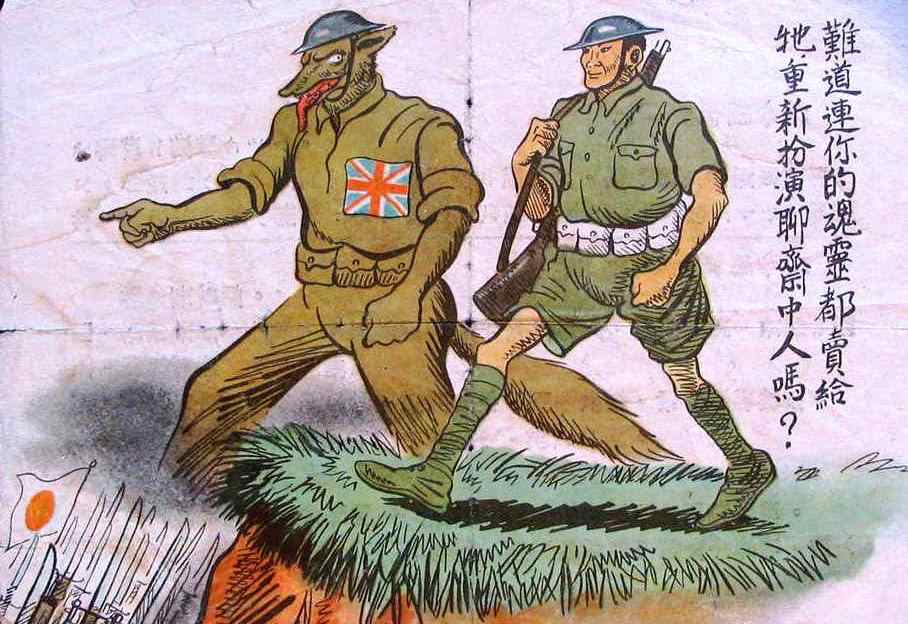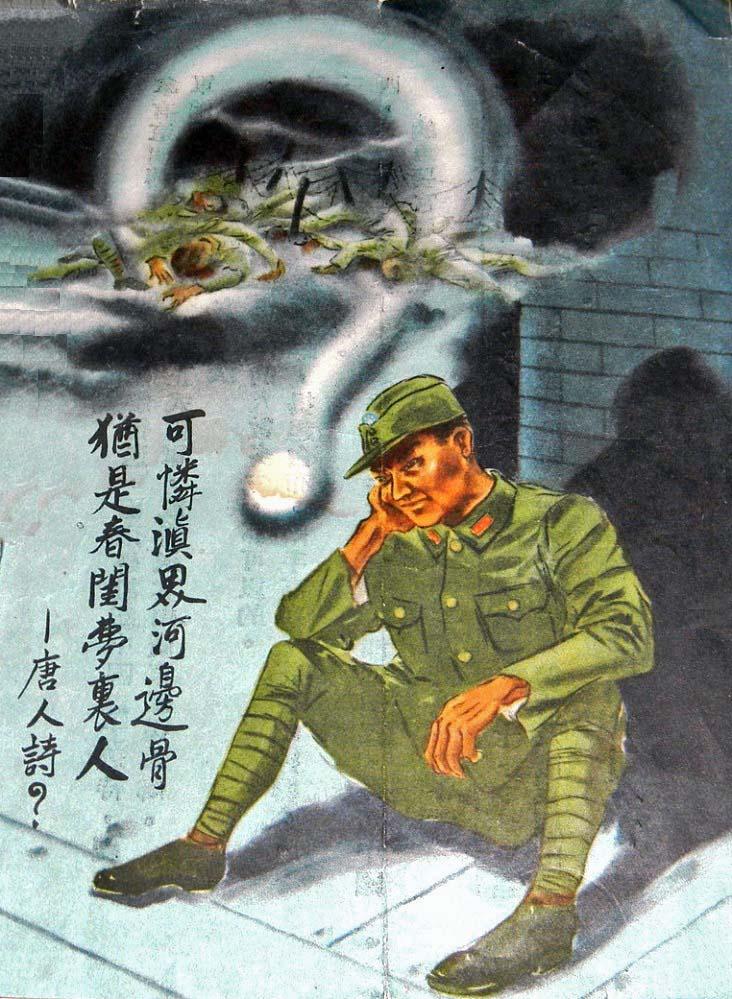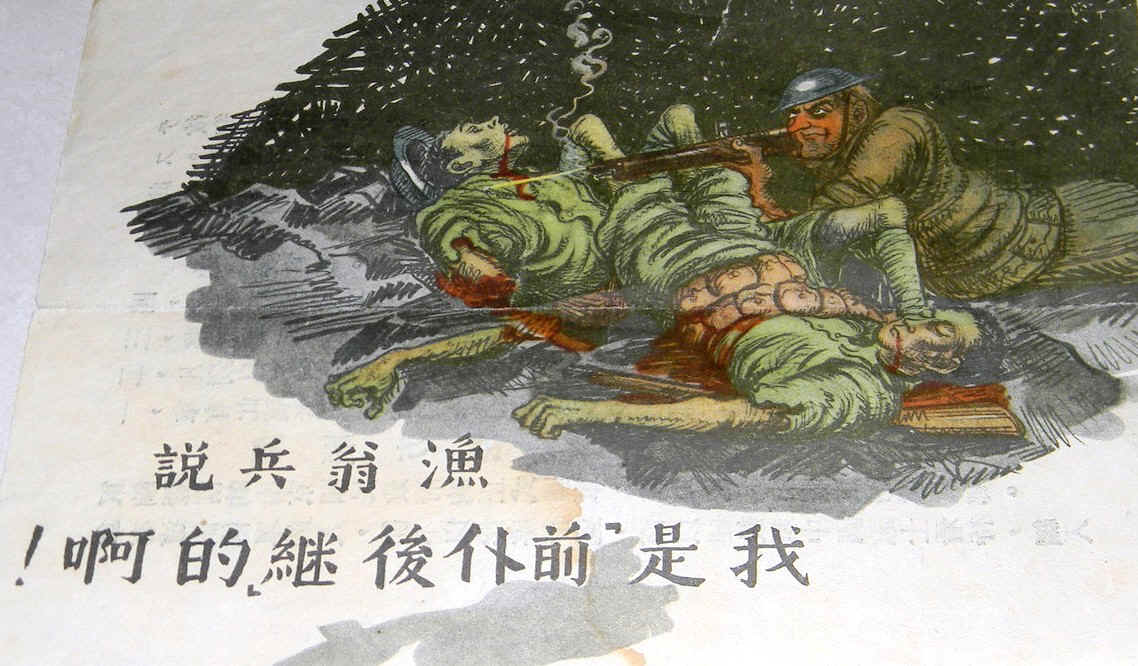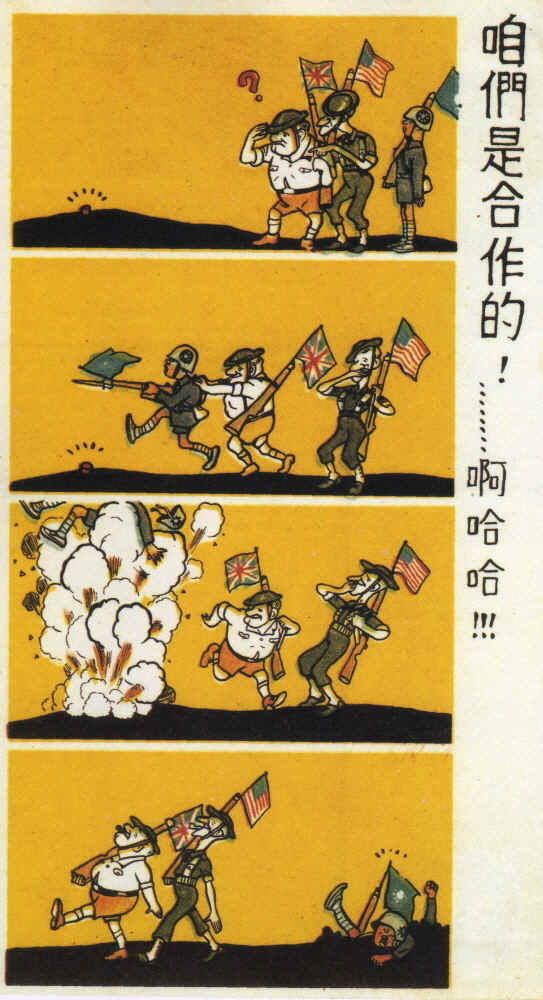Wolf Boy: Japan’s Psy-Ops Against China
- By Guest blogger
- 2 April, 2014
- No Comments
Japan’s psychological warfare program in World War II was remarkably diverse, and targeted not just the western Allies, but also the Chinese, as the examples below demonstrate. They are from the extremely comprehensive website Psywarrior. The explanations accompanying the illustrations are written by Herb Friedman, who quotes a 1948 publication on physchological warfare issued by the Washington Combat Forces Press as saying that “the Japanese developed a close-knit system that combined public relations of both army and navy, all domestic government publishing, complete control of book publishing, magazines, press, radio, and film, propaganda intelligence and over-all psychological warfare.” The products of this sprawling system were surprisingly sophisticated and tuned into the psyche of the enemy and especially the cultural context that would make the message more appealing for the intended recipient, the common Chinese soldier.
Wolf Boy
A colorful Japanese leaflet was dropped on the Chinese troops allied with the British. It shows a wolf-faced British soldier leading a Chinese soldier to a cliff where he will surely fall off and into massed Japanese bayonets depicted below. The text on the front is:
Do you really want to sell your soul to the British white ghost and see the Liao Zhai tragedy befall you?
Why does the British soldier have the face of a wolf? In China the wolf represented rapacity and greed or an official who exacted money unfairly from the people in the shape of unauthorized taxation. In fact, Chinese propaganda sometimes showed the Japanese as wolves. The term “white Ghost” was an insult used for Caucasians. The Liao Zhai tragedy relates to famous tales from Chinese history and can be translated to “Strange stories from the Chinese Studio.” This is a collection of nearly five hundred mostly supernatural tales published during the early Qing Dynasty. These tales are about being deceived or led to death in some way. The Japanese seemed to have done their homework here and this would appear to be an excellent propaganda leaflet.
The back of the leaflet is all text. The first two columns say that anyone who surrenders with the leaflet will not be treated as a captive but as an ally. He will also be given cash in exchange for working for the Japanese. The leaflet then explains how it is to be used. It is not necessary for each person to have a leaflet; a group may surrender with one leaflet. When approaching, wave a white flag, hold your hands high, and have any guns pointing downwards. Hand over the leaflet to the Japanese. If you have killed a British or American soldier who had some documents, you will get promotion to a high office in the newly formed government. The leaflet is signed by the Japanese Commanding General and there is a section that gives instructions to the Japanese soldiers who are handed the leaflet.
Chun Gui’s Dream
I love this Japanese leaflet to the Chinese because it reminds me of other leaflets. At the top we see soldiers dead in the barbed wire. The Germans produced similar leaflets for the French showing both French and American soldiers dead in the wire. To the left of the Chinese soldier is a question mark. In Vietnam the United States produced a very similar leaflet coded Q-237 showing a Viet Cong wondering about the war with a large question mark to his right. This leaflet and the one following both seem to have been used in the same place; Guangdong province. The text on the front appears to be a parody of an old Tang dynasty poem:
Pitiful bones by the river on Yunnan’s frontier – Just like the man in Chun Gui’s dream.
This refers to an ancient story about a woman whose newlywed husband was drafted into the forces of a warlord. She dreamed that he had died in battle. The site of the scene (Yunnan’s border) indicates that in both cases the leaflets were aimed at soldiers drafted from Guangdong province for fighting in the south. The back of the leaflet has directions for surrender, offering to let the holder either enroll in the army of the “ew China” (the Japanese puppet state in Nanjing) or return home to Guangdong. Those who have killed American, British, or Chiang Kai-shek troops are offered favorable terms, as is also the case with anyone carrying important documents when they defect. There is also Japanese text at the back left instructing Japanese troops to respect the terms of surrender.
No Sooner has one of us Fallen…
This Japanese leaflet clearly shows the Chinese soldiers that the British see them as nothing better than shields to be used as protection against Japanese fire. The British soldier hides behind the bodies of two dead Chinese soldiers. He lives as the soldiers are shot to pieces. The text on the front is:
No sooner has one of us fallen than another enters the breach!
The leaflet targets men from the Guangdong provincial fishing villages who had been drafted into the Republican forces. The image implies that they are dying like flies for the sake of the foreigners. As in the leaflet above, the back of the leaflet has directions for surrender, offering to let the holder either enroll in the army of the “New China” or return home to Guangdong.
Chinese Dupe
This leaflet is so clearly drawn and the message so plain that it can be used for both literate and illiterate Chinese. It consists of four vertical panels. In the first, American and British soldiers see an unknown object on the ground. In the second panel they push a Chinese soldier ahead toward the object. The object turns out to be explosive and the Chinese soldier is killed in the third panel. In the final panel, the British and American soldiers march away quite satisfied with themselves. The moral is clear; to fight alongside the Allies means death to the Chinese. The text is:
The British and Americans are not your allies and will betray you.







 Copyright © 2025
Copyright © 2025
Leave a Reply